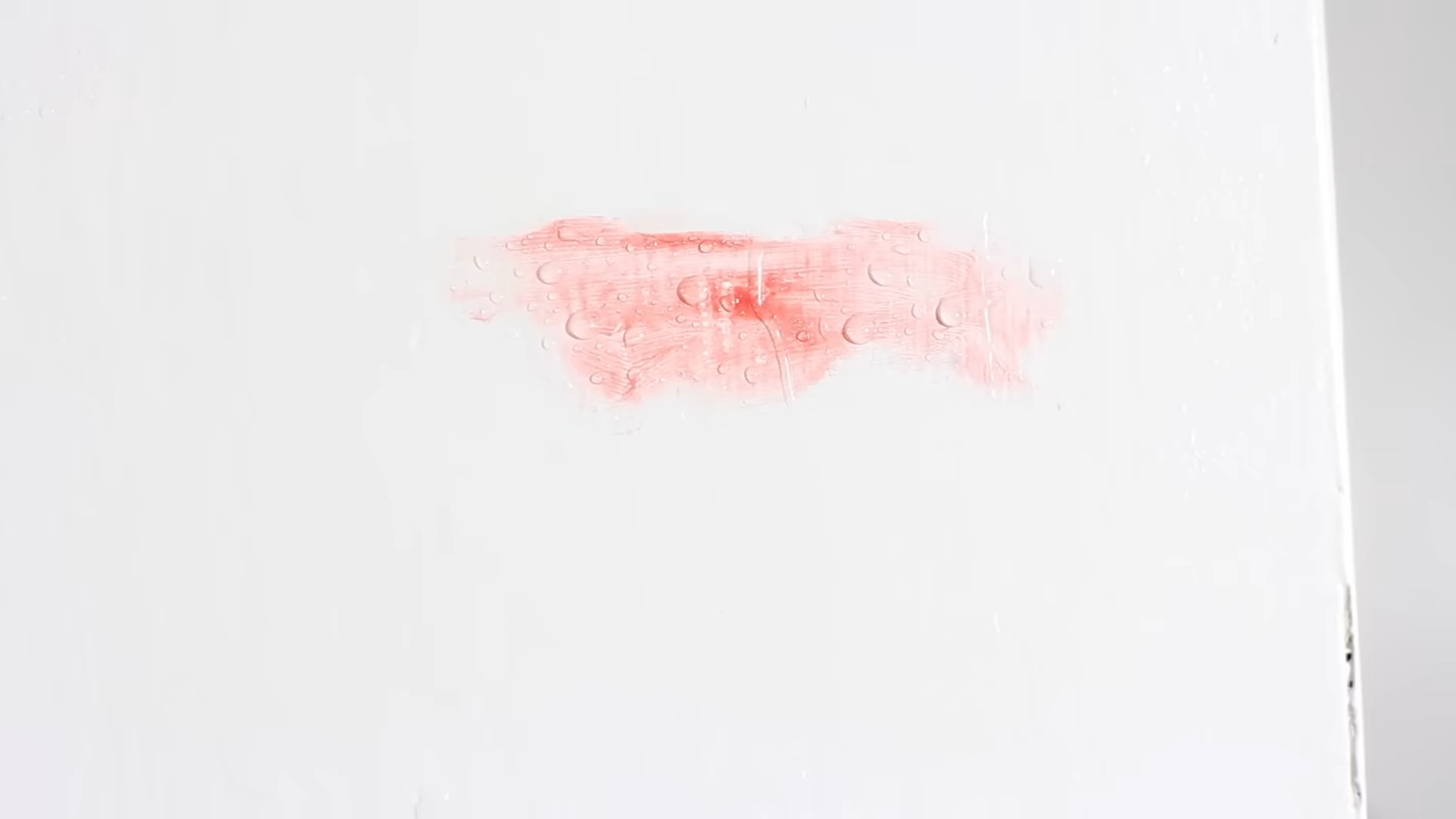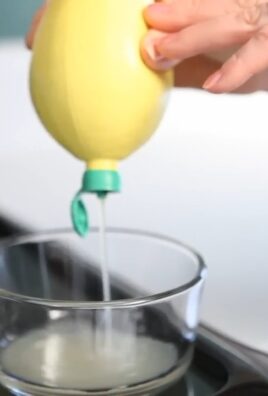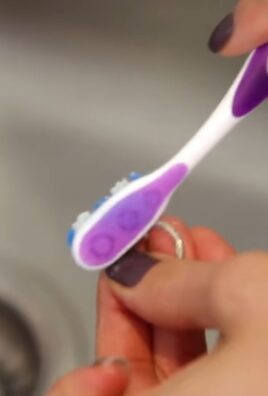Vinegar cleaning hacks – who knew this humble kitchen staple could be your secret weapon to a sparkling home? I’m always on the lookout for budget-friendly and eco-conscious ways to keep my space clean, and let me tell you, vinegar has become my go-to solution.
For centuries, vinegar has been more than just a condiment. Ancient civilizations, from the Egyptians to the Romans, recognized its potent cleaning and preserving properties. They used it to disinfect wounds, clean surfaces, and even preserve food. Talk about a multi-tasker!
In today’s world, we’re bombarded with harsh chemicals and expensive cleaning products. But what if I told you that you could achieve the same, if not better, results with something you probably already have in your pantry? That’s where these vinegar cleaning hacks come in. From banishing stubborn stains to deodorizing your entire house, vinegar offers a natural and effective alternative. Plus, it’s safe for your family, pets, and the environment.
I’m excited to share my favorite DIY tricks and hacks that will transform the way you clean. Get ready to ditch the chemicals and embrace the power of vinegar!

Unlocking the Cleaning Power of Vinegar: DIY Hacks for a Sparkling Home
Vinegar. It’s not just for salad dressing anymore! This humble kitchen staple is a powerhouse when it comes to cleaning. I’ve been using vinegar for years, and I’m constantly amazed by its versatility and effectiveness. Plus, it’s eco-friendly and budget-friendly – a win-win! So, let’s dive into some of my favorite DIY vinegar cleaning hacks that will leave your home sparkling.
General Vinegar Cleaning Tips
Before we get into specific projects, here are a few general tips to keep in mind when cleaning with vinegar:
* Dilution is Key: Always dilute vinegar with water. A 50/50 solution is usually a good starting point, but you can adjust the ratio depending on the task.
* Test First: Before cleaning a large area, test the vinegar solution on a small, inconspicuous spot to ensure it doesn’t damage the surface. This is especially important for delicate materials like marble or granite.
* Ventilation is Important: Vinegar has a strong odor, so make sure to open windows or turn on a fan while you’re cleaning. The smell will dissipate quickly.
* Don’t Mix with Bleach: This is crucial! Mixing vinegar with bleach creates toxic chlorine gas. Always use vinegar separately from bleach-based cleaners.
* Use White Distilled Vinegar: This is the best type of vinegar for cleaning because it’s clear and doesn’t contain any dyes that could stain surfaces.
Cleaning Your Microwave with Vinegar
Microwaves can get incredibly gross, incredibly fast. Splattered food, lingering odors – it’s not a pretty sight. But don’t worry, vinegar to the rescue! This is one of my go-to cleaning hacks.
Materials You’ll Need:
* 1 cup water
* 1/2 cup white distilled vinegar
* Microwave-safe bowl
* Clean sponge or cloth
Step-by-Step Instructions:
1. Combine Water and Vinegar: In the microwave-safe bowl, mix the water and vinegar.
2. Microwave the Solution: Place the bowl in the microwave and heat it on high for 5-10 minutes. The mixture should boil and create steam.
3. Let it Sit: Leave the microwave door closed for another 5-10 minutes to allow the steam to loosen the grime. This is the magic step!
4. Wipe Clean: Carefully remove the bowl (it will be hot!). Use a clean sponge or cloth to wipe down the interior of the microwave. The loosened food particles should come off easily.
5. Stubborn Spots: For any stubborn spots, dip the sponge or cloth in the vinegar solution and scrub gently.
6. Rinse (Optional): If you want to remove any lingering vinegar smell, you can wipe down the interior with a clean, damp cloth.
Descaling Your Kettle with Vinegar
Hard water can leave mineral deposits (scale) inside your kettle, which can affect the taste of your tea or coffee. Vinegar is a fantastic descaler.
Materials You’ll Need:
* White distilled vinegar
* Water
* Clean sponge or cloth
Step-by-Step Instructions:
1. Fill the Kettle: Fill the kettle with a 50/50 mixture of white distilled vinegar and water. The amount will depend on the size of your kettle, but make sure the solution covers the scale buildup.
2. Boil the Solution: Bring the vinegar and water mixture to a boil.
3. Let it Sit: Once boiled, turn off the kettle and let the solution sit for at least 30 minutes, or even overnight for heavily scaled kettles.
4. Empty and Rinse: Empty the kettle and rinse it thoroughly with clean water several times to remove any traces of vinegar.
5. Boil Water Again: To be extra sure, boil a kettle full of fresh water and discard it. This will help eliminate any remaining vinegar taste or smell.
6. Wipe Clean: Wipe down the exterior of the kettle with a clean, damp cloth.
Cleaning Your Showerhead with Vinegar
Showerheads can accumulate mineral deposits and grime, which can reduce water pressure and make your shower less enjoyable. A vinegar soak can work wonders!
Materials You’ll Need:
* White distilled vinegar
* Plastic bag (gallon-sized)
* Rubber band or twist tie
Step-by-Step Instructions:
1. Fill the Bag: Pour enough white distilled vinegar into the plastic bag to completely submerge the showerhead.
2. Attach the Bag: Carefully place the bag over the showerhead, ensuring that the showerhead is fully immersed in the vinegar.
3. Secure the Bag: Use a rubber band or twist tie to secure the bag tightly around the showerhead neck.
4. Soak Overnight: Let the showerhead soak in the vinegar overnight. This will allow the vinegar to dissolve the mineral deposits and grime.
5. Remove and Rinse: The next morning, remove the bag and discard the vinegar.
6. Run the Shower: Run the shower for a few minutes to flush out any remaining vinegar and loosened debris.
7. Wipe Clean: Wipe down the showerhead with a clean cloth.
Cleaning Your Coffee Maker with Vinegar
Just like kettles, coffee makers can also suffer from mineral buildup. Cleaning your coffee maker with vinegar will help keep it running smoothly and ensure your coffee tastes its best.
Materials You’ll Need:
* White distilled vinegar
* Water
* Coffee filter
Step-by-Step Instructions:
1. Fill the Reservoir: Fill the coffee maker’s water reservoir with a 50/50 mixture of white distilled vinegar and water.
2. Run a Brewing Cycle: Place a clean coffee filter in the basket and run a full brewing cycle.
3. Repeat if Necessary: If your coffee maker is heavily scaled, you may need to repeat this process.
4. Rinse with Water: After the vinegar cycle, fill the reservoir with fresh water and run two or three brewing cycles to rinse out any remaining vinegar.
5. Wipe Clean: Wipe down the exterior of the coffee maker with a clean, damp cloth.
Cleaning Windows and Mirrors with Vinegar
Vinegar is a fantastic natural cleaner for windows and mirrors, leaving them streak-free and sparkling.
Materials You’ll Need:
* Spray bottle
* 1/2 cup white distilled vinegar
* 1 1/2 cups water
* Microfiber cloth
Step-by-Step Instructions:
1. Mix the Solution: In the spray bottle, combine the vinegar and water.
2. Spray the Surface: Spray the vinegar solution onto the window or mirror.
3. Wipe Clean: Use a clean microfiber cloth to wipe the surface dry. Microfiber cloths are ideal because they don’t leave lint or streaks.
4. Stubborn Spots: For stubborn spots, spray the area again and let the solution sit for a few seconds before wiping.
Deodorizing Your Garbage Disposal with Vinegar
Garbage disposals can get pretty smelly. Vinegar can help neutralize odors and keep your disposal fresh.
Materials You’ll Need:
* White distilled vinegar
* Ice cubes
Step-by-Step Instructions:
1. Freeze Vinegar Ice Cubes: Pour white distilled vinegar into an ice cube tray and freeze until solid.
2. Grind the Ice Cubes: Drop a few vinegar ice cubes into the garbage disposal and turn it on. The ice cubes will help scrub the disposal blades and the frozen vinegar will neutralize odors.
3. Run Cold Water: Run cold water while the disposal is running.
4. Repeat as Needed: Repeat this process as needed to keep your garbage disposal fresh.
Removing Hard Water Stains with Vinegar
Hard water stains can be a real pain, especially in bathrooms. Vinegar is a great natural solution for removing these unsightly stains.
Materials You’ll Need:
* White distilled vinegar
* Spray bottle
* Clean sponge or cloth
Step-by-Step Instructions:
1. Spray the Stain: Spray the hard water stain with white distilled vinegar.
2. Let it Sit: Let the vinegar sit for 15-30 minutes to allow it to dissolve the mineral deposits.
3. Scrub Gently: Use a clean sponge or cloth to scrub the stain gently.
4. Rinse with Water: Rinse the area with clean water.
5. Repeat if Necessary: For stubborn stains, you may need to repeat this process.
Cleaning Your Dishwasher with Vinegar
Your dishwasher works hard to keep your dishes clean, but it can also accumulate food particles and mineral deposits. Cleaning your dishwasher

Conclusion
So, there you have it! This simple yet powerful **vinegar cleaning hack** is more than just a trend; it’s a game-changer for a cleaner, healthier, and more sustainable home. We’ve explored how this humble kitchen staple can tackle everything from stubborn hard water stains in your bathroom to greasy buildup in your kitchen, all without the harsh chemicals found in many commercial cleaners.
Why is this a must-try? Because it’s effective, affordable, and eco-friendly. You’re not just saving money; you’re reducing your exposure to potentially harmful substances and minimizing your environmental impact. Plus, the satisfaction of creating your own cleaning solutions and seeing them work wonders is incredibly rewarding.
But the beauty of this vinegar cleaning hack lies in its versatility. Feel free to experiment with different infusions. Add citrus peels (lemon, orange, grapefruit) to your vinegar during the steeping process for a boost of freshness and extra degreasing power. A few drops of your favorite essential oils, like lavender, tea tree, or eucalyptus, can also enhance the scent and add antibacterial properties. For tougher stains, consider creating a paste of baking soda and vinegar for a powerful scrubbing action. Remember to always test any new cleaning solution on an inconspicuous area first to ensure it doesn’t damage the surface.
Don’t be afraid to adjust the vinegar-to-water ratio based on the specific cleaning task. For light cleaning, a 1:1 ratio might suffice, while tougher jobs may require a stronger concentration of vinegar. The key is to observe how your surfaces respond and adjust accordingly.
We truly believe that this vinegar cleaning hack will revolutionize your cleaning routine. It’s a simple, effective, and sustainable way to keep your home sparkling clean. So, ditch the expensive, chemical-laden cleaners and embrace the power of vinegar!
We’re eager to hear about your experiences with this DIY cleaning method. Try it out, experiment with different variations, and share your results in the comments below. Let us know what worked best for you, any challenges you encountered, and any creative solutions you discovered. Together, we can build a community of eco-conscious cleaners who are passionate about creating a healthier and more sustainable home. Your tips and insights could inspire others to make the switch and experience the benefits of this amazing vinegar cleaning hack. We can’t wait to see what you come up with!
Frequently Asked Questions (FAQs)
Is vinegar safe to use on all surfaces?
No, vinegar is not safe to use on all surfaces. Avoid using vinegar on natural stone surfaces like marble, granite, and limestone, as the acidity can etch and damage them. It’s also best to avoid using vinegar on waxed wood furniture, as it can strip the wax finish. Be cautious when using vinegar on electronics, as any liquid seepage can cause damage. Always test a small, inconspicuous area before applying vinegar to a larger surface. If you’re unsure, consult the manufacturer’s instructions for the surface you’re cleaning.
What type of vinegar is best for cleaning?
White distilled vinegar is generally considered the best type of vinegar for cleaning. It’s inexpensive, readily available, and has a high acidity level, making it effective at dissolving dirt, grime, and mineral deposits. Avoid using flavored vinegars, such as apple cider vinegar or balsamic vinegar, as they may contain sugars or other additives that can leave a sticky residue. While apple cider vinegar can be used in some cleaning applications, white distilled vinegar is the most versatile and reliable option.
How do I get rid of the vinegar smell after cleaning?
The vinegar smell typically dissipates within a few hours. To speed up the process, you can open windows and doors to ventilate the area. You can also simmer a pot of water with citrus peels or spices like cinnamon and cloves to create a pleasant aroma that will help mask the vinegar smell. Adding a few drops of your favorite essential oils to your cleaning solution can also help to minimize the vinegar odor. Another trick is to place bowls of baking soda around the room to absorb any lingering odors.
Can I mix vinegar with bleach?
No, never mix vinegar with bleach. Mixing these two substances creates chlorine gas, which is highly toxic and can cause serious respiratory problems, burns, and even death. It’s crucial to keep vinegar and bleach separate and never combine them in any cleaning solution. Always use these cleaning agents independently and follow the manufacturer’s instructions carefully.
How can I use vinegar to clean my washing machine?
To clean your washing machine with vinegar, add 2 cups of white distilled vinegar to the detergent dispenser and run a hot water cycle. This will help to remove detergent buildup, mineral deposits, and mildew. For a more thorough cleaning, you can also add 1/2 cup of baking soda directly to the drum of the washing machine before running the cycle. After the cycle is complete, wipe down the inside of the drum and the rubber gasket with a clean cloth. Repeat this process every few months to keep your washing machine clean and fresh.
Is vinegar effective at killing germs and bacteria?
Vinegar has some antibacterial and antiviral properties, but it’s not as effective as commercial disinfectants. While vinegar can kill some types of bacteria and viruses, it may not eliminate all harmful microorganisms. For thorough disinfection, especially in areas where germs are a concern, it’s best to use a disinfectant cleaner that is specifically designed to kill germs and bacteria. However, vinegar can be a useful cleaning agent for removing dirt, grime, and mineral deposits, which can help to reduce the overall number of germs in your home.
Can I use vinegar to clean my coffee maker?
Yes, vinegar is an excellent way to clean your coffee maker and remove mineral buildup. Fill the water reservoir with a solution of equal parts white distilled vinegar and water. Run the coffee maker through a full brewing cycle. Then, run two cycles with fresh water to rinse away any remaining vinegar. This will help to keep your coffee maker clean and ensure that your coffee tastes fresh and flavorful.
How do I clean hard water stains with vinegar?
Vinegar is very effective at removing hard water stains. For showerheads and faucets, soak them in a bag filled with vinegar for a few hours or overnight. For shower doors and tiles, spray them with vinegar and let it sit for 15-20 minutes before scrubbing and rinsing. For toilets, pour a cup of vinegar into the bowl and let it sit overnight before scrubbing and flushing. The acidity of the vinegar will dissolve the mineral deposits and leave your surfaces sparkling clean.





Leave a Comment